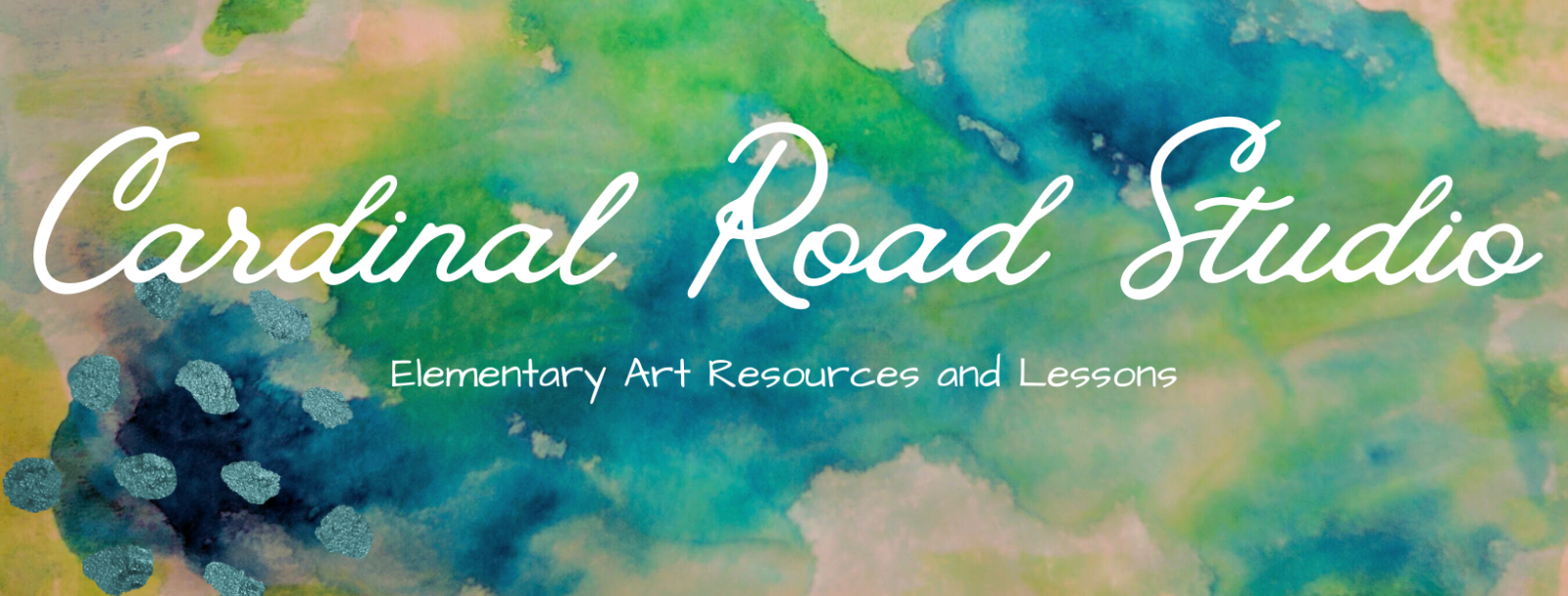Jackson Pollock Art Activity. How to Create an Expressive Action Painting.
Notable things about Jackson Pollock:
- His style was known as action painting.
- Pollock would drip and at times pour the paint onto his canvases. The canvases were horizontally placed and liquid house paint was used.
- He was an Abstract Expressionist. Jackson Pollock’s main goal was to represent emotion in his art with expressive mark-making.
You can refer to the “Who is Jackson Pollock”? page on the Tate Kid’s website, while planning on how to introduce the Jackson Pollock Art Activity.
Here’s how we create our own Pollock style pieces:
This Jackson Pollock art activity is a one day lesson that requires some preparation ahead of time. I often have the kids make multiple pieces, depending on how much time we have after they begin. I also love to have the kids pick their favorite of the bunch and we turn them into paper looms for a weaving lesson. This lesson was used in second grade.
After we read Action Jackson by Jan Greenberg and Sandra Jordan, the students will pick a piece of construction paper out of the available options and write their name on it. They will need to make sure that the paper is “name side” down to avoid covering it with paint.

Here’s how I prep the tables ahead of time:
Cover all of the tables (newsprint or however you tend to cover tables).
- Every student gets a paint brush, a paper towel and a smock.
- I have a collection of plastic jars that I saved from glazes that I also use as water cups. Yogurt or cottage cheese containers work well too. (I’m sure you already have your go to plastic containers!) In this case, I will mix up a large batch of watered down white tempera paint and watered down black tempera. (I chose black and white to match the black and white paper strips that I will be including in my future paper weaving lesson. Feel free to switch up your paint colors).
- Test out your watered down paint. You want to make sure it’s watery enough to easily drip, yet the color is not too toned down.
- I will pour this into the cups for students to share with their neighbor. I like to pass these out after my demonstration to avoid spills before we even get started.
Demonstration:
- I stress that since the paint is watery, there is no need to wind up their paint brush. That’s a sure fire way to turn the classroom itself into a Pollock painting.
- After loading up their brushes they will simply need to do a little flick or tap on their brush with their other hand.
- After doing several rounds of one color, the brushes can be wiped in the paper towel before using the next color.
- After it looks like a good amount of the paper is covered, the painting can go on the drying rack
- If time, multiple paintings can be completed.

Cleanup
- Any additional paintings will go on the drying rack.
- The students will also return their brush to the “dirty brush bucket” to soak, throw out their paper towel and will wash their hands. Their hands will be quite messy!
- The final action paintings can be displayed as a class or can be used for another project such as a weaving or a collage.
*If you enjoyed my Jackson Pollock art activity, you may also like my Wonderful Wire Figure: A Playful take on Alexander Calder’s Circus. blog post:
Need more elementary art resources? Check out my TPT Store.
For weekly Art Education Inspo and a free sunflower coloring page for the end of the school year, add your name and email address below!

